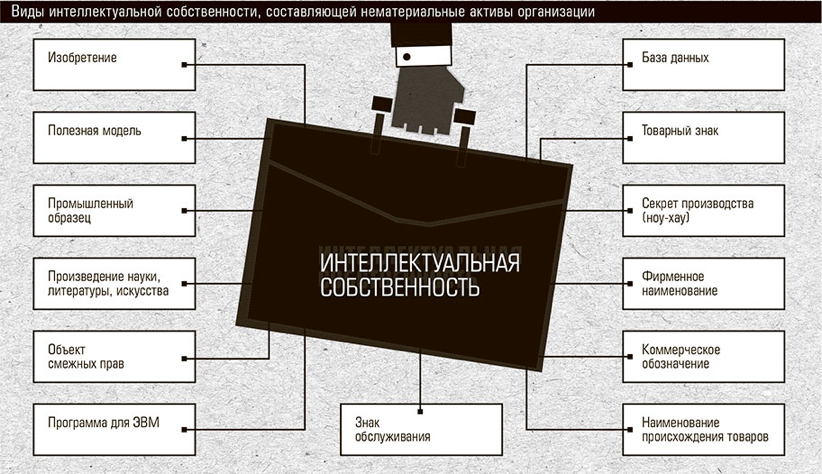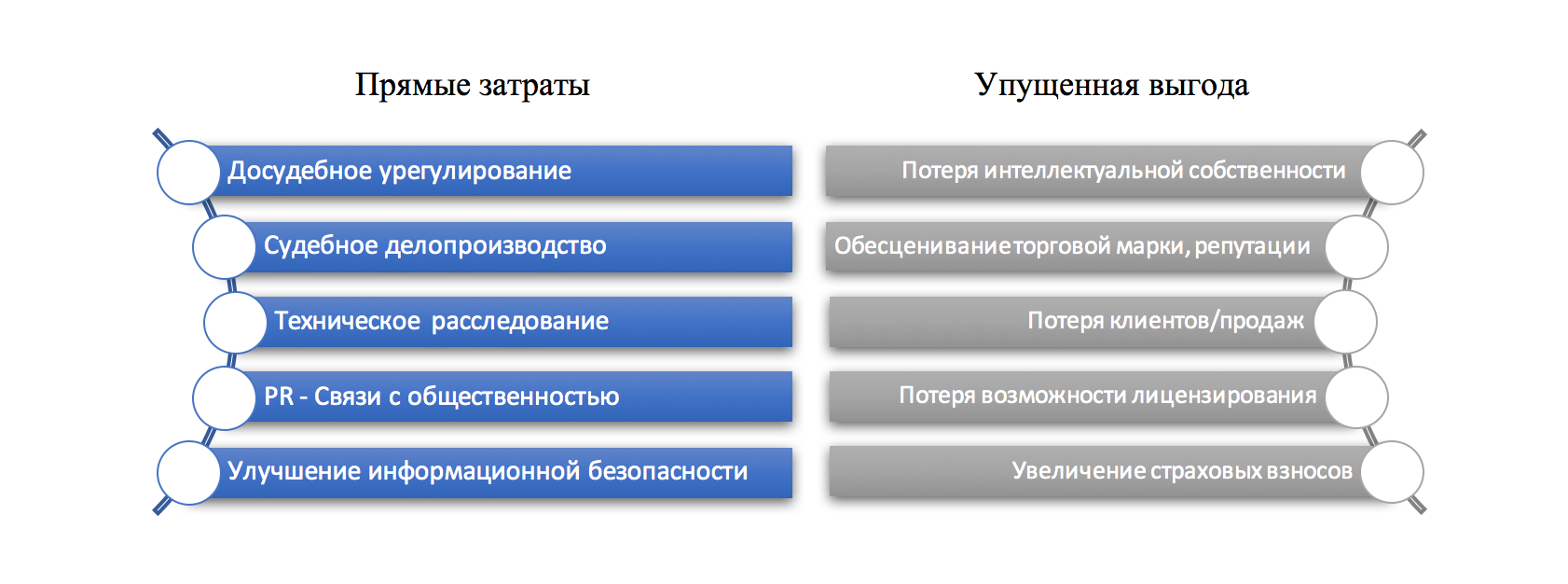Intellectual property - intangible asset

Due to the obvious progress in the field of information technology and the general growth of the services sector, intangible assets are acquiring much greater value than it was years earlier. Enterprises are increasingly striving for the effective use of their intangible assets, which implies the need for legal protection. Against this background, there has been an increase in the commercialization of intellectual property (IP) and the investment attractiveness of IP rights, the use of exclusive rights in the fight against competitors. It is known that IP can account for more than 80 percent of the value of an entire company. For example, Coca-Cola Corporation accounts for 96% of intangible assets.

The development of IP institutions is closely linked to information security, which is a prerequisite for the development of innovation. The innovation process, as a result of which inventions are successfully introduced to the market, serves as the main driving force for the development of companies, competitiveness and economic growth in general.
Intellectual Property Threats
In the era of digital technology, it has become much easier to violate intellectual property (IP) rights, to steal and copy IP. Cyber theft is becoming the main method of implementing such threats. While the media speak with the enviable constancy of theft of these credit cards, very little is mentioned about the theft of IP objects. However, this does not mean that such situations are insignificant. In fact, the loss of the American economy due to the international theft of IP was estimated at 300 billion dollars a year (according to the report of the commission on the theft of American intellectual property from 2013).
There are three categories of IP theft: fake and pirated goods, pirated software and theft of trade secrets. Thanks to the categorization, the IP Commission was able to more accurately assess the scope and cost of IP theft in the United States compared to 2013 (report update from 2017). For example, in 2015, fake and pirated goods imported into the United States are estimated at $ 58- $ 118 billion, while exported = $ 85 billion (update of the commission’s report on the theft of American intellectual property). But pirated software, although priced in lower amounts, is a much bigger problem in view of the ease of downloading and the presence of malicious elements.
According to US IP Coordinator Danny Marty, "Advances in technology, increased mobility, rapid globalization and the anonymous nature of the Internet are creating new challenges in protecting trade secrets." Offenders can carry out thefts from anywhere in the organization and beyond, while maintaining anonymity and expanding the circle of suspects. Attackers can be both former and current employees of the company, competitors, criminal and frivolous hacker groups, as well as subjects of foreign states, etc. At the same time, insider threats are one of the most common causes of violations. Although such threats often arise in the face of negligence and ignorance, threats from insiders, in general, are becoming an increasingly urgent cyber security issue. Threats from competitors are driven by the assumption
The remaining risks of cyberthreats regarding IP rights include the following types of violations: unauthorized interference with databases, the creation and use of computer software to modify and block information, the dissemination of false information about a company on the network, and the illegal use of personalization tools (including trademarks).
Cost of IP Infringement
As you know, there are two types of losses from violation of IP rights: direct costs and lost profits. In practice, the United States also has the term reduction in business value.

Since many of the costs are hidden and indirect, it is extremely difficult to calculate the full cost of a potential IP violation. Indeed, for evaluation, it is required to consider: a decrease in consumer confidence in goods and services with a registered trademark; decrease in market share at the disposal of the copyright holder; loss of income by the copyright holder due to the replacement of products with counterfeit products; loss of income from imperfect commercial agreements with potential licensees, etc.
When filing a lawsuit, the main complaint is that the sale of the offender could be realized by the copyright holder. The claim concerns the profit that the plaintiff would receive if the sale were made by him and not by the offender. The plaintiff may demand both damages and compensation without indicating the cost of the losses incurred.
Various sources describe the three main methods for calculating economic damage and loss of profits as a result of violation of IP rights: the “before and after” violation method; the “if not a violation” method and the method of actual costs and missed opportunities. Each method has its own limitations and peculiarities, for example, it is not always possible to measure costs and profits simultaneously before and after the violation, it is also not known exactly when the violation will be eliminated and there is no estimate of the residual effect of the event, etc. In the framework of the method of costs and missed opportunities, the real or necessary expenses for restoring the violated right are determined, the cost of the lost property rights to IP due to the violation, as well as income not received by the copyright holder due to the violation (or income received by the violator of the rights).

Losses from Apple and iPhone and iPod software developers as a result of piracy totaled more than $ 450 million. According to IDC estimates, Russian companies will spend about $ 5 billion a year on eliminating the consequences of technical risks from using pirated software - detecting problems and recovering data. If there were no piracy, in 2015 software manufacturers could earn an additional $ 1.34 billion in Russia. In 2013, $ 2.6 billion (according to BSA).
Conclusion
Do not forget about other types of harm caused by counterfeit products on the market. In addition to economic damage, social and political emerge. Consumption of falsified products and medicines can lead to irreparable consequences, which causes social protest. A country in which counterfeit products are produced and sold almost uncontrollably is losing a positive image in the eyes of the world community. The political leaders of such countries are accused of weakness and inability to cope with fakes.
In modern conditions, intellectual property (IP) is of particular value not only for business, but also for the entire state and international economy. Ensuring the protection of information, trademarks, copyrights and other IP objects contributes to the successful development and stable income.

